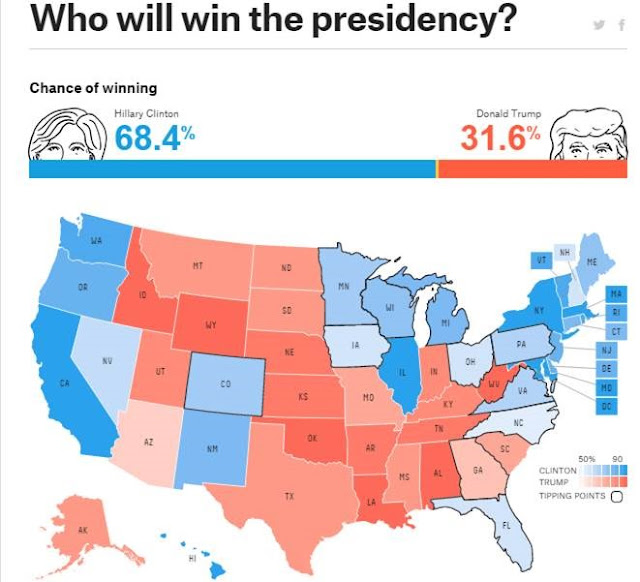Teaching the 2016 Election: Parsing the Polls, Part II
by Shawn Healy, PhD, Civic Learning Scholar and Barb Laimins, Teacher Mentor Liaison
In Tuesday’s post, we discussed the benefits of aggregated polling data, sample construction, and margin of error. Today, we’d like to delve further into survey respondents, wade into state-by-state polling averages, and conclude by showcasing resources helpful to teaching about public opinion polls.
When presenting polling data, we’re frequently asked about the increase in cell phone only households and its impact on survey samples. For example, 45% of likely Illinois voters exclusively use cell phones, while another 20% are mostly cell phone dependent. Only 17% are mostly or exclusively landline users.
The latter group skews older and whiter, making it unrepresentative. Therefore, we must dismiss polls that exclude cell phone users, yet also acknowledge the difficulty in reaching them with the norm to ignore calls from unknown numbers. More than anything, this adds yet another caveat to the excessive premium we place on polls.
Tuesday’s discussion focused on national polls of the presidential contest, predictive of the popular vote, but not the consequential Electoral College. Our favorite site for this exercise is FiveThirtyEight.com (we also highly recommend their podcasts), which incorporates state-by-state polling and historical models to forecast probable winners.
 |
| Election map from FiveThirtyEight.com |
As we write, Hillary Clinton is a 68% favorite to win the presidency and is expected to win 311 electoral votes, a comfortable cushion for the necessary 270. Each of the so-called swing states that President Obama won twice is trending in her direction, as is North Carolina, which Mitt Romney captured in 2012. Even the traditionally red states of Arizona and Georgia appear very much in play.
Illinois remains a dark hue of blue and Clinton is a prohibitive favorite to win her birth state as has every Democrat since her husband in 1992. The predicted 14% margin of victory is comparable to that of John Kerry over George W. Bush in 2004, the last time favorite son Barack Obama wasn’t atop the ticket.
We’ll conclude with links to lessons incorporate polling into your classroom:
- This simulation encourages students to create and analyze a poll to develop deeper understanding:
- PBS created these lesson plans that look at the past two elections and discuss the influence of polling, respectively:
- The Roper Center offers lessons to create a political strategy based on polling and another to evaluate polling methods and results:




Comments
Post a Comment